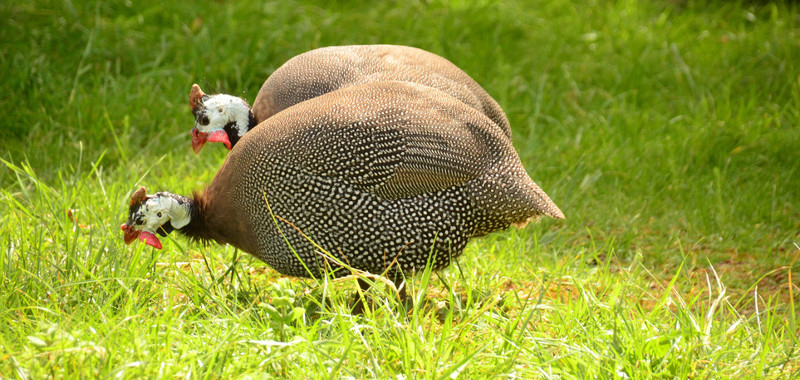Are Guinea fowl good pest control?

Will Guinea fowl eat insects, pests and bugs?
Guinea fowl are well known to poultry keepers for their insect and pest eating ability. Guineas roam around in free range groups eating ticks, bugs, insects and garden pests as well as small rodents and frogs.
Below: A video of Guinea fowl free ranging in grass hunting for bugs.
Guinea Fowl & Insect Control:
Guinea fowl are a hit with gardeners thanks to their voracious appetite for demolishing bugs and pest insects in the garden. Guineas do scratch but with no where near the same dedication as chickens.
Keeping guinea fowl is also an effective means of pest control. Flocks of Guineas kill and eat mice and small rats.
In addition, Guinea fowl can be used to control insects. Wild Guineas eat mainly insects, and domestic Guineas can consume large amounts of insects without affecting garden vegetables or flowers.
Guineas have been used to control wood ticks and insects such as grasshoppers, flies, and crickets. Guineas can reduce keepers' risk of Lyme disease by consuming deer ticks, which carry the disease. Guinea fowl also eat slugs and snails.
But Guinea fowl are also popular because their loud warning cries serve as a perfect alarm system against predators such as snakes or foxes and they will also let you know when people come to your property.
When Guinea fowl free range in open areas where they can see all around them then they are able to see predators more easily and quickly from a further distance. However during the Summer when the Guinea hens are laying and the crops are not yet harvested they are more vulnerable.
One reason for this is that the fox or other predator is provided with cover by the crops and since the Guinea fowl cannot see them as easily they are unable to sound the alarm and escape as quickly.
Another reason is that the Guinea hens like to lay their eggs in the dense hedgerows and sometimes the hens can be taken when they are sitting on the eggs in the undergrowth and are not able to see the fox in enough time.
This is what I think happened to my Guinea fowl that were taken. One was taken near the nesting site that my Guineas have been using recently and the other was in a field of barley where the hedgerows and field are very dense with growing crops.
